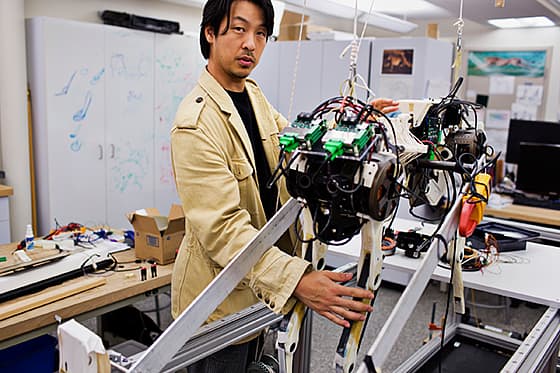Cheetah Robot Is Just As Efficient As Cheetah!
MIT's robotics lab is surely full of interesting robotics projects. The latest project, a 70 pound Cheetah robot developed at MIT is just as efficient as a real Cheetah in terms of running efficiency. The robot recently was put to treadmill test and it was found that it wastes very limited energy in an 90 minute run at about 5 miles per hour. The robotic cheetah is of the same size as its animal counterpart.
The researchers employed very lightweight electric motors that produce high torque while wasting very little heat. The motors can be programmed to offer stiffness to the legs and offer stimuli to outside forces such as push. Sangbae Kim, one of the lead researchers says that achieving energy efficiency in legged robot is very difficult. Most of the big robots either carry gas engines or heavy Li-Ion batteries. This adds to significant loss of energy when the robot is in action. Check the robot in action -
The team is currently working on improving their design and expect that the robot will be able to run at about 35 mph, while keeping the losses to bare minimum. The emphasis of the research is on improvement of the motors used for joints, which could prove significant advancement in robotics.

The researchers employed very lightweight electric motors that produce high torque while wasting very little heat. The motors can be programmed to offer stiffness to the legs and offer stimuli to outside forces such as push. Sangbae Kim, one of the lead researchers says that achieving energy efficiency in legged robot is very difficult. Most of the big robots either carry gas engines or heavy Li-Ion batteries. This adds to significant loss of energy when the robot is in action. Check the robot in action -
The team is currently working on improving their design and expect that the robot will be able to run at about 35 mph, while keeping the losses to bare minimum. The emphasis of the research is on improvement of the motors used for joints, which could prove significant advancement in robotics.

Image Credit: M.Scott Brauer
0

